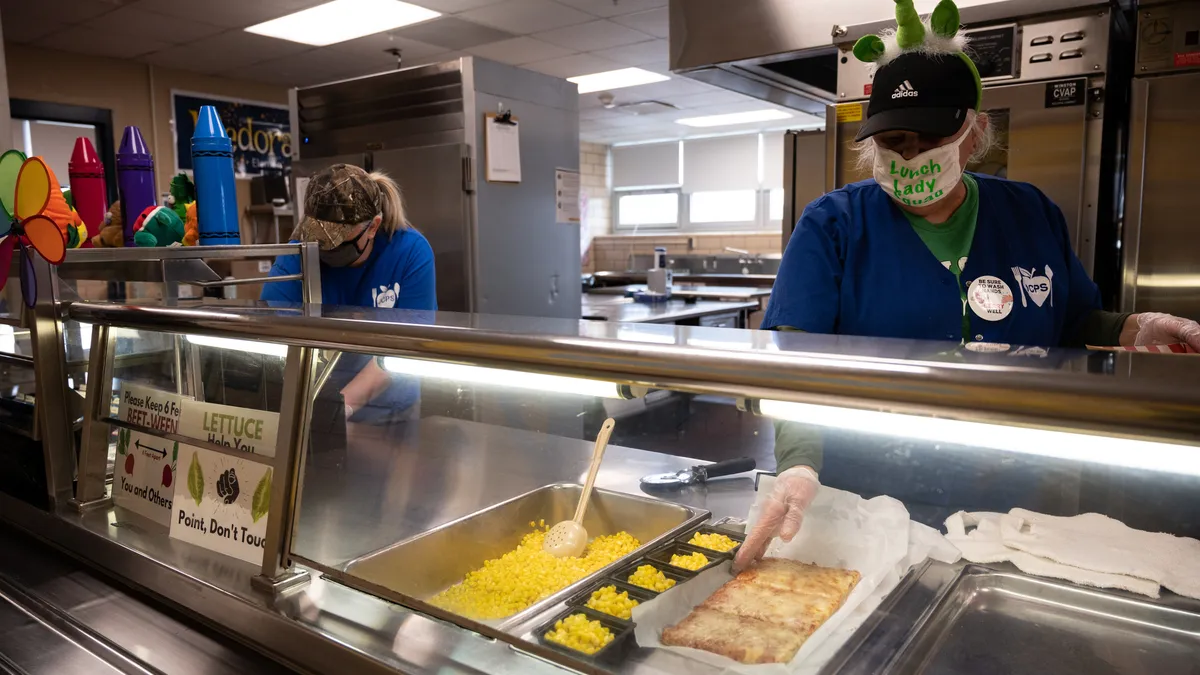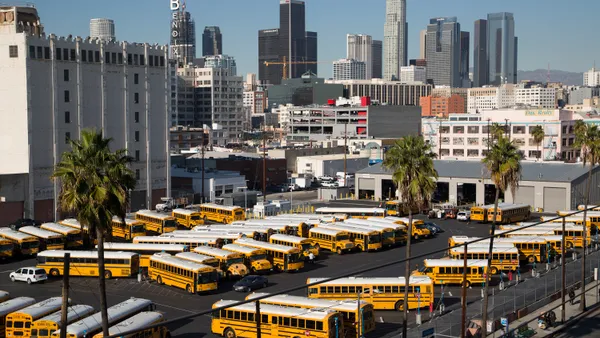Arne Duncan is former U.S. secretary of education under President Barack Obama. Jennifer LeBarre is executive director of student nutrition services for the San Francisco Unified School District.
Students learning in classrooms with in-person instruction is a welcome reprieve for many families across the country. At home, however, American families are paying more for groceries, gas and housing. Food prices have climbed to their highest since 2011, according to a recent U.N. index. Inflation, along with supply and labor chain shortages, are persistent remnants of a pandemic that has impacted all sectors of our working economy.
Unfortunately, schools are not immune to these economic pressures, and our nation’s most underserved students — the ones who rely on schools as a key source of daily nutrition — are the ones who will stand to suffer the most as a result.
Indeed, students continue to bear a disproportionate burden of the pandemic’s impacts, including in the lunchroom. In light of the pandemic’s economic fallout, the School Nutrition Association recently reported 70% of school meal programs have limited menu choices, and nearly half are experiencing reduced staff due to the ongoing impact of the pandemic.
We know the lifelong benefits of consistent, nutritious meals for students: better academic performance, decreased obesity, decreased behavioral issues and more. The U.S. Department of Agriculture has made healthy school meals a priority with a recent announcement about moving toward higher nutrition standards for school meals. Yet right now, schools are unable to secure many basic menu items or to get them into the hands of students in need.
In light of the pandemic, school districts have received some relief from the mounting pressure to feed students amid short- and long-term absences, an increase in students qualifying for school meals, limited menu options and soaring food costs.
The USDA child nutrition waivers for the 2021-22 school year have enabled schools to continue feeding all students safe and healthy meals, free of charge. And, thankfully, leading food advocates like Share our Strength, Feeding America, Food Research Action Center, the School Nutrition Association and others have come together to call for an extension of the school meal waivers currently set to expire at the end of the school year.
Combined with a recent, temporary adjustment to this year’s reimbursement rate, schools and districts are equipped in the short term to navigate some of the obstacles to providing all kids with nutritious meals. But with more students being eligible to receive free meals at school, and supply and staffing shortages persisting, the USDA’s waivers and reimbursement adjustments are temporary fixes that leave many wondering how to plan for the coming school year.
It is time to take the “build back better” approach and apply it to school feeding programs. We must take what we learned over the past two challenging years and apply those learnings to create long-term, systemic improvements.
Make universal school meals a permanent USDA program
Throughout the pandemic, the federal government rightly recognized the benefit of feeding all students, regardless of income eligibility. As tectonic shifts in the economy sent families into and out of poverty from week to week and month to month, waiver programs enabled all families to access nutritious meals without imposing an undue administrative burden on resource-strapped schools.
With more children and families facing food insecurity, school meals are a reliable and safe source of nourishment. By providing meals to all students regardless of their caregivers’ economic status (regardless of need), universal free meal policies are also a powerful tool for advancing equity in schools, as free meals substantially reduce the stigma around kids from low-income backgrounds eating free lunch in school cafeterias.
California, Maine and Colorado have already passed state bills to fund universal free meals. There have been proposals at the national level to accomplish this: One example is the proposed Universal School Meals Program Act of 2021. Now is the time to enact this program at the federal level.
Increase the federal school lunch reimbursement rate
At the same time, with food and labor costs at historic highs and increased demand for higher-quality, healthier foods in schools, the per-meal federal school meal reimbursement must also be reconsidered. In school districts that serve more than 60% free and reduced-price lunches, that reimbursement rate was $3.53 per free meal for the 2020-21 school year. This rate scarcely covered costs under optimal conditions.
In the current economic environment, schools are being forced to dip into reserves or general funds, or reduce the quality of meals served in order to keep costs in check. Increased reimbursement rates will help provide healthier meals and higher quality, as well as sustainable wages for a workforce that desperately needs them.
A permanent substantial reimbursement rate increase — 30-40% at a minimum — would enable districts nationwide to better prioritize health and wellness among staff, students, families and communities at large. Throughout the pandemic and continuing into the current school year, USDA has recognized the necessity of increasing reimbursement rates by providing a temporary waiver enabling schools to tap into the higher reimbursement rates for summer meals throughout the school year.
This increase should be made permanent, as we don’t foresee costs going down anytime soon.
Enable long-term flexibility for feeding students
If we’ve learned anything from the past two years, it’s that we must constantly re-evaluate and adapt our approaches to teaching, feeding and keeping students safe at school. Scientists acknowledge large-scale pandemics may recur in our lifetime. Extreme weather is keeping students out of schools more regularly. And more and more alternative school options are becoming available to students and their families.
Traditional cafeteria lines might be operating today, but we must be prepared to adapt to new conditions tomorrow. Schools need ongoing flexibility to be able to serve students in changing conditions.
By enabling systemic reforms to our school meal programs in the form of higher reimbursement rates and universal free meals, we can permanently improve the way we nourish kids and open channels for innovation and learning. Ultimately, we will build more resilient communities and a more resilient food system while also building community wellness.
In the wake of unprecedented crisis, we must learn and adapt to a new normal, not return to a broken status quo. It is time to center student health and wellness and build resilient systems to form a strong foundation for the future.







 Dive Awards
Dive Awards














